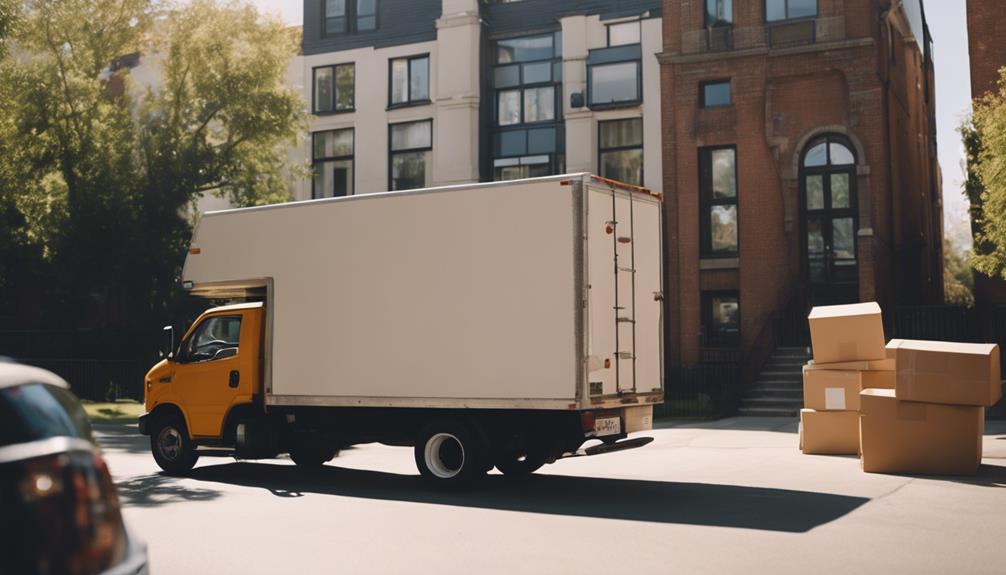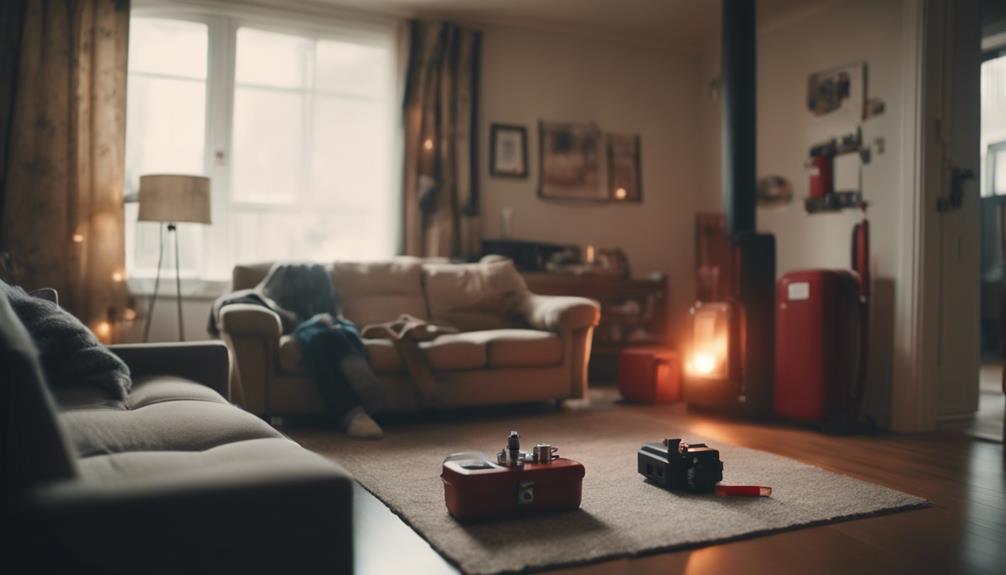Moving in together takes thoughtful planning and clear communication. Start by discussing your long-term goals and individual needs for personal space. It's vital to agree on finances, including shared expenses and whether to maintain joint accounts. Create a detailed moving checklist to stay organized and declutter before packing. Don't forget to update your address and set up utilities at your new place. Once settled, unpack essentials first and arrange your space to feel like home. Finally, engage with your new community to build connections. There's a lot to consider, so keep exploring to ensure a successful move!
Key Takeaways
- Discuss long-term relationship goals and individual needs for personal space before making the move together.
- Create a joint budget that outlines shared expenses and financial responsibilities to avoid future conflicts.
- Organize a detailed moving checklist, including packing supplies, utility management, and scheduling movers to streamline the process.
- Prioritize unpacking essential items first to create a comfortable and welcoming home environment right away.
Relationship Expectations and Communication
When moving in together, it's crucial to set clear relationship expectations and maintain open communication to ensure both partners feel valued and understood.
Start by discussing your long-term goals—where do you see yourselves in one, five, or even ten years? Be honest about your investment in the relationship and your feelings about marriage.
Make sure to communicate your individual needs for personal space and alone time. It's essential to recognize that occasional solitude may be necessary within your shared space.
Address any anxieties you have about sharing living quarters and prioritize setting personal boundaries.
Financial Planning and Responsibilities
Navigating financial planning and responsibilities together is essential for a smooth transition when moving in as a couple.
It's crucial to have open discussions about your finances, as this will help you avoid potential conflicts down the road.
Here are some key points to consider:
- Acknowledge shared expenses like rent, utilities, and groceries.
- Decide if you'll maintain joint accounts or keep finances separate.
- Identify each other's strengths in financial management.
- Create a budget that includes moving costs and ongoing expenses.
Practical Moving Logistics

Planning the logistics of your move is just as important as managing your finances to ensure everything goes smoothly.
Start by creating a detailed moving checklist to keep yourself organized. Set a moving date and inform everyone involved, like movers and utility companies.
Research moving companies, gather quotes, and confirm your choice well in advance. Declutter your belongings to make the move easier, and notify important contacts of your address change.
Prepare a clear path for the movers to access your home, and keep essential documents and valuables secure.
Designate a space for packed boxes to avoid clutter, and ensure you've got your payment method ready for the movers on moving day.
Packing and Inventory Strategies
Gathering packing supplies is the first step to ensuring your move is organized and efficient. Start by collecting the essentials to make the process smoother. Here's what you'll need: Gather sturdy boxes in various sizes, packing tape, bubble wrap, and markers for labeling to keep your belongings secure during transit. Don’t forget to set aside blankets or padding for fragile items, as well as zip-lock bags for small pieces like screws and bolts. Additionally, consider researching essential moving apps to download, which can help you stay on top of scheduling, inventory tracking, and even finding reliable moving services.
- Sturdy boxes of various sizes
- Packing tape for secure closures
- Bubble wrap or packing paper for fragile items
- Permanent markers for labeling
As you pack, label each box by room and contents to simplify unpacking later.
Protect fragile items with proper materials, and consider packing a 'first night' box filled with essentials you'll need immediately.
This strategy helps you stay organized and reduces stress on moving day, making your transition into your new home much easier.
Address and Utility Management

Once you've got your packing supplies sorted, it's time to tackle address and utility management to ensure a smooth move into your new home.
Start by updating your address with the postal service and any subscriptions.
Contact utility companies to schedule disconnection at your old place and reconnection at your new one.
Don't forget to set up internet and cable services, as these are crucial for your comfort.
Inform your banks, insurance providers, and healthcare professionals about your address change.
If you're moving to a new district, consider updating your voter registration, too.
Taking these steps will help you seamlessly transition to your new home without unnecessary delays or complications.
Settling In and Creating a Home
Unpacking essential items first will help you create immediate comfort in your new space. Start with the necessities that make your home feel inviting.
Once you've settled in the basics, think about how you want to arrange your furniture and decor. This step is crucial for establishing a cozy atmosphere.
Explore your new neighborhood to find local resources and amenities that enhance your living experience.
Consider these elements for a welcoming environment:
- Comfortable seating for relaxation
- Personal decor that reflects your style
- Functional kitchenware for cooking together
- Cozy bedding for restful nights
Safety and Security Considerations

Changing locks at your new residence ensures your security and peace of mind. You never know who might've a copy of the old keys, so it's best to start fresh.
Next, check smoke detectors and carbon monoxide alarms to ensure they're working properly. Familiarize yourself with emergency exits and local emergency contacts, so you're prepared in case of any situation.
Reviewing your home insurance policy is crucial—make sure it provides adequate coverage for your belongings. If you feel it's necessary, consider installing a security system to increase safety.
Community Integration and Socialization
Building connections with your new community can greatly enhance your experience of settling in and make the transition smoother. Engaging with your neighbors and local activities helps create a sense of belonging.
Here are some effective ways to integrate into your community:
- Introduce yourself to neighbors to foster relationships.
- Research local events and social groups to participate in.
- Explore nearby parks, shops, and services to familiarize yourself.
- Join community boards or online groups for updates and connections.
Conclusion
Moving in together can feel daunting, but remember, it's a chance to grow as a couple.
By discussing expectations and planning finances, you can tackle the practicalities with confidence.
Picture your future home: a cozy space filled with shared memories and laughter.
Embrace teamwork during the moving process, and don't forget to connect with your new community.
With open communication and mutual support, this journey will strengthen your relationship and create a lasting foundation for your lives together.










